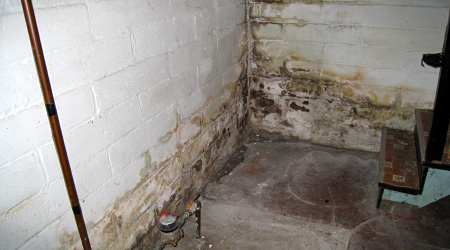How to Keep Water Away From Your Foundation

Water is good for trees, shrubs and many other plant forms. It's not, however, always good for your house, especially when your property stays wet and does not drain properly. "Water is the number one cause of damage to the homes we live in," says Jamison Brown with AmeriSpec Home Inspection Service in southeastern Virginia.
"Excessive water around and under the footprint of the home can produce a host of unwanted consequences - fungal growth and structural damage." To protect your home, the soil around the home should slope away from the foundation on all sides.
Typically, the recommended slope is one inch per foot for at least six feet away from the home. This rule of thumb is not always possible for hard surfaces like drives and walks. However, with these impervious surfaces, water can keep moving away from the home even if the slope is less.
With the passage of time, the presence of shrubs and household outdoor pets can result in a change in the slope around the home, says Brown. Homeowners should annually review the ground around the home to ensure the gardening activities, installation of mulch or raised beds - and the comfortable spot your dog lays to rest in - have not resulted in a low spot or a slope, which is pitched toward the home.
If the lot slopes toward a home, a swale, or a shallow ditch, should be installed to prevent surface water from flowing against the foundation. A swale should carry surface water around the home and away on the surface of the soil or to a catch basin that will carry the water via an underground drainage pipe.
A French drain can also help get water into the ground where it can quickly disperse. The drain can be as simple as a huge hole dug and filled with rock, or it can be as sophisticated as a system of interior foundation drains that feed into a sump pump and exterior flow system.
Gutters and downspouts are also important means for getting water away from your home's foundation, especially when the structure does not have substantial overhang. For gutters to function properly, they must be firmly attached to the eave of the roof; all seams must be sealed and the gutters must slope toward the downspout with a slope of one inch in 17 feet, says Brown.
A good rule of thumb - one downspout should not drain more than 35 feet of gutter. The gutters must be clean to prevent clogging. The gutter downspouts need to be extended away from the home a minimum of four feet with six feet being preferred. When downspouts are connected to underground drains, it is very important to keep all debris out of the gutters, downspouts and underground drains.
Air-conditioning units can also create unwanted water-logged areas. Consider extending your unit's drain pipe to direct extra water away from the foundation and to a gardening area where moisture-loving plants like cardinal flower, Joe-pye weed, milkweed, giant coneflower, cannas or bee balm can drink it up.







